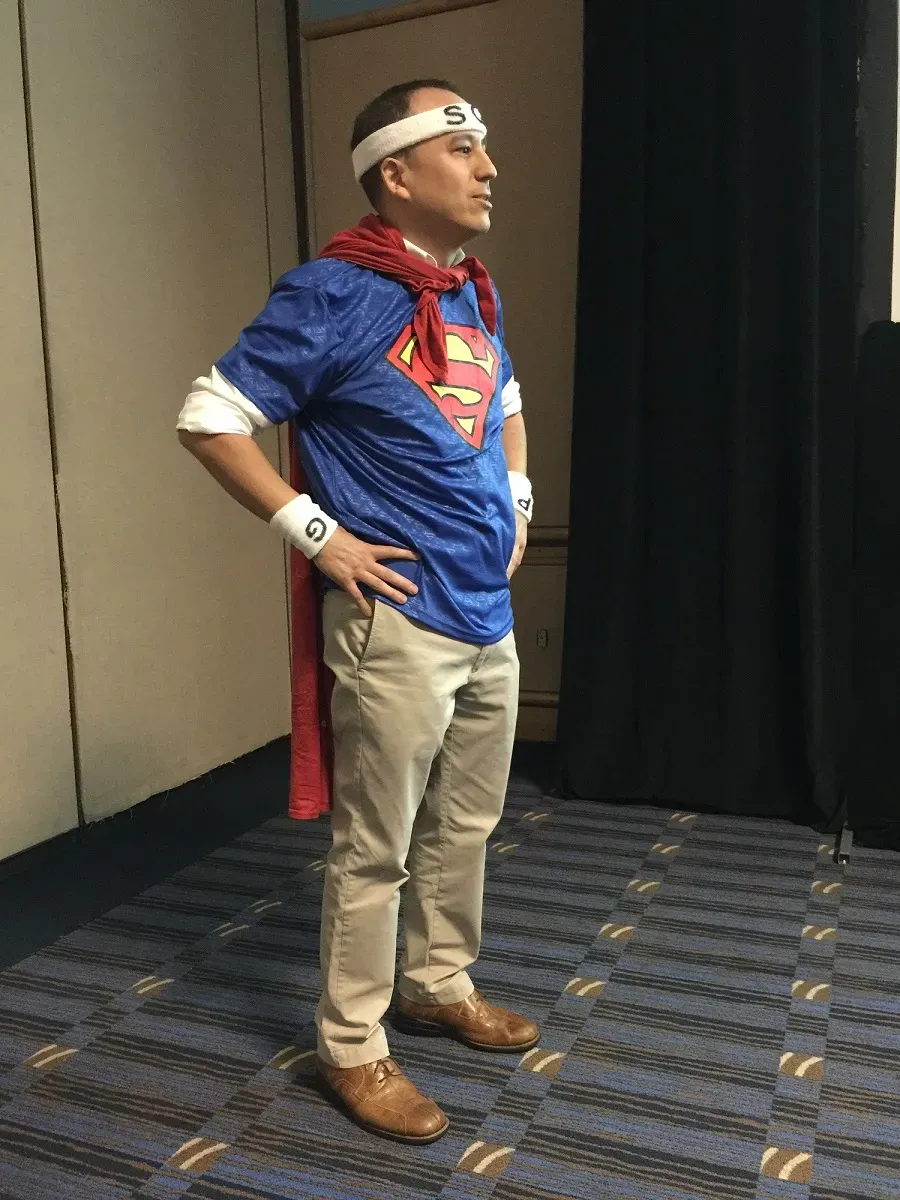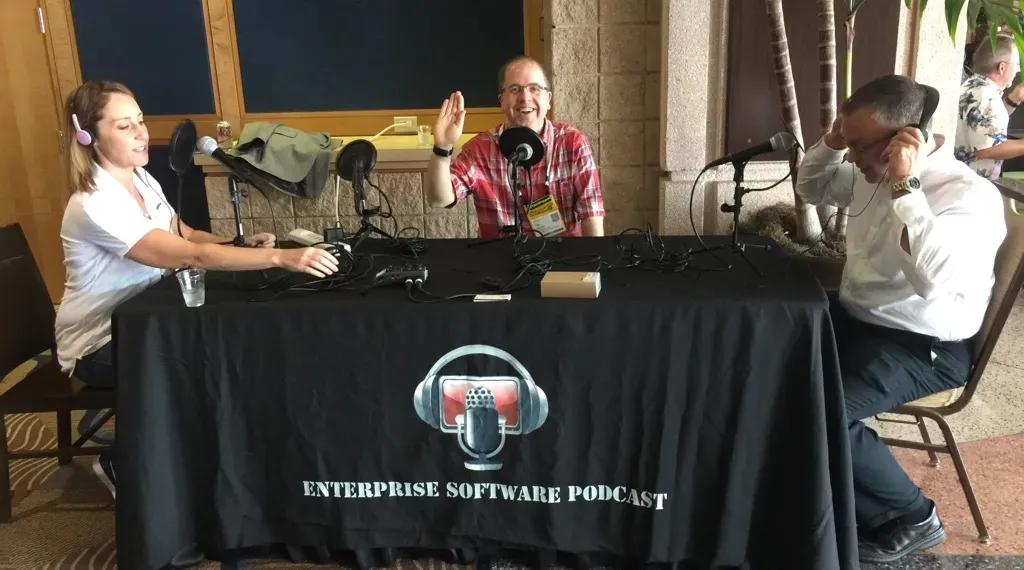I'm catching up on writing these (on Saturday in the airports on my way home!) but dating them for the actual day of the sessions… and from this post onwards I'm writing AFTER I figured out what day of the week is what. (LOL, if you missed it, I'm not admitting to anything!). This is 'day 2' or Thursday, in real days!
My first posts are here:
So, here we go with a summary of what I attended etc. on day 2!
Session 1 - Disaster Recovery on a Budget - John Lowther
Bright and early, at 8:00 am, was the first session of the day. Despite the low turnout due to several partner parties the night before, those who attended got a ton of useful real-world tips from John, one of the GP MVPs on-site this week. Here are some key takeaways I noted that are worth repeating:
- Disaster Recovery (DR for short) is NOT the same as having offsite backups. What if a tree falls on your server room and destroys your hardware? It happened to John, it could happen to you. Having *something* as a pure DR solution to use in a pinch could buy you enough time from disaster to purchase new hardware to allow you to get your critical processes run. Think: run your payroll, pay your vendors, anything mission critical.
- John's example is he has a fully functioning DR environment on a Microsoft Surface (version 1). In an absolute pinch, he can pass that to Payroll or Payables and they can get on with super urgent tasks while IT sorts out the servers. As he mentioned, you can't buy servers at Best Buy… it will take time, and if you have an alternative, don't rush it if you have a short-term solution.
- There is a big difference between a test "company" and a test "environment". A test company is another company db on the same SQL server instance as your production data. If your server goes down, all companies go down on that instance. A test environment is a separate SQL instance entirely. Now, you *could* put two instances on one physical or virtual server but for DR purposes, it's best to have it physically separate just for DR, even if you have a more robust "test" environment for other purposes that allows for more users to connect at a time.
- When you create test companies or test environments, don't forget to change production pathnames too. Don't leave "test" anything pointed at "live" locations. SSRS, Excel Reports, and products with pathnames like EFT, SafePay, Report Writer dictionaries etc. are his examples.
- Use SQL scripts in SQL jobs to schedule automatic backups and copy them to your DR system to keep them current. If you are unfortunate enough to have the "oak tree" scenario, just making regular backups on the server sitting under a dead tree isn't helpful even if you have a DR system elsewhere. Remember: it's for DR purposes, not regular test or development purposes where you may not want data refreshed regularly due to ongoing testing or other projects.
This subject is near and dear to my heart as I have seen so many companies struggle with backup and restore processes and it doesn't have to be complex. Some scenarios are, but most don't have to be.
Session 2 - Crash Course in Bar Coding - Panatrack
Several of the session slots were "sponsor" time, meaning they were dedicated to sessions offered by the various sponsors. I must say, I was 100% impressed by the Panatrack folks, one of the few sessions that offered a very useful session and barely mentioned their product. So many vendors offer a sales pitch and it's sometimes a waste of time if you are hoping for actual useful tips. That is just my opinion, but bravo, Panatrack held a great session that would be helpful to anyone thinking of barcoding in the future.
My notes are a little random so I intend to download their slides later to fill in the gaps but some of the things I took away are this:
- Don't skimp on hardware. Quick swap batteries, Purpose-Built devices that can handle being dropped etc. are all things to consider. Don't use consumer-grade devices like iPhones even though you could kit them up to work; it will cost you so much more in the end.
- Label your inventory and assets but avoid information that contains things that change. Don't use location, or user on fixed assets for example as that can change. It's one thing to have a machine naming convention that includes the user's name as the devices often get wiped and redeployed to other users as they move around an organization. Just don't then use that machine name as the Asset Label too, because then it's out of date the first time it is repurposed.
- Good discussion of the recommendations for types of barcodes to use, as in the 1D and 2D world, there are lots of options to choose from. I didn't make note of the "why" some of their recommendations were made so I won't list the recommended ones here… just in case my notes weren't complete.
- For existing items, you will likely need to pre-print labels but get a label printer for receiving as you bring items in.
- For Fixed Assets, ensure the labels you buy are going to outlast the asset they are attached to. They do not recommend printing Asset labels, as they tend not to last as long as pre-printed ones. The Fixed Asset module can track Asset Label separately from Asset ID and can also track other things like location and custodian so buy pre-printing generic numbered sequence labels and use them. They don't have to mean something when the FA module can print a list of who has what on its own.
- Record transactions as they happen as best you can. Use a scanner during receiving to validate what you are receiving vs. the PO, not entering it after the fact.
- Ensure if you need wireless coverage for your warehouse and storage (inside and outdoors) that the coverage is continuous throughout. Often this part of most buildings is the worst for connectivity but if you're going to automate, you will want good wifi hardware throughout to allow receivers/shippers to do their job easily.
Session 3 - SQL Server Shootout - John Lowther, Steve Endow, Mark Huff, David Ahalt
First off, kudos to David Ahalt for subbing in for Frank Heslin at the last minute… he did a superb job for only having a couple of days to prep.
This was a fun session, not unlike the Excel Shootout. Each "contestant" had three rounds and John Lowther was the moderator and chief heckler. Steve Endow, ever confident in his abilities, showed up in full Superman attire before the session began in a blatant attempt to intimidate his opponents. It worked, as he won the SQL Shootout!

Some of the various tips on display were these:
- Compress your backups to save space (SQL Server properties)
- Change your default backup paths if you are always manually overriding!
- Perform a "copy only" backup if you are doing a one-off backup/restore. This won't affect your restore chain if you ever need to restore and it can't find a backup that you took and deleted because you didn't need it again.
- Some cool scripts from Mark Huff on automating the handling of memory in SQL (his slides should have details of this)
- If you have a lot of admin to do, consider creating an Admin db on your SQL instance to house your custom-built procs and things that you can store administrative things without putting it in your GP dbs
- Use the Print command to make SQL work like a calculator in a pinch
- Use F7 (Object Explorer Details) and the search bar to find SQL objects quickly. Quit opening up the Stored Procs folder and waiting for it to redisplay all of the GP SPs! GREAT TIP!
- Use Information_Schema for the same reason if you are searching all SQL objects. Tables, Views, Procs, Columns/Fields… all fantastic tips.
- Mark Huff also had some scripts for clearing companies that you don't restore to a test environment, fixing login issues etc. (again, this should be on their slide deck I hope)
- Steve recommends using SQL productivity tools like Redgate SQL Prompt or SQL Boost if you do a lot of SQL work. He was typing SSF and it would auto-insert "select * from" and continued with his scripts. Also, the ability to format GP stored procs to make them readable. Priceless, but not free. :)
- CTRL-SHIFT-R to refresh Intellisense. Sometimes it works, sometimes it doesn't!
Interview on Enterprise Software Podcast
I was contacted the day before if I was interested in being interviewed on the Enterprise Software Podcast, and I enthusiastically said yes! I listen to the podcast all the time and it's always interesting, even if the topic on the surface does not appear to be of interest to me in the Microsoft Dynamics GP world. It was a pleasure to meet Darcy Boerio this week, as I hadn't met her in person yet. Todd McDaniel was too busy in his Dynavistics booth in the Expo Hall to join us (I was interviewed during the Expo Hall hours), so it was just Bob McAdam, Darcy and myself on the interview. It was fun, yet brief, so I look forward to their posting of this episode which will be a recap of GPUG Summit 2016 (and all the Summits). Tim Wappat makes an appearance as well, as his interview was after mine.

Rest of the Day
After the interview, I volunteered to hand out bags at the reception area. Yes, people still were picking up bags that late in the conference!
Since it was desks with power and decent chairs, I sat there from about 1:45 pm until 5:30 pm as it was comfier than the powered desks in the session zone! I got to write a couple of blogs, with the wrong dates (LOL, clearly I was distracted!) and got caught up on email and some other administrivia. The traffic was steady and it was good to help out since the organizers do so much for us in getting these conferences off the ground!
At one point, someone leaving the Expo Hall early couldn't find a DCI staff member and ended up bringing me some lead generation devices and shipping manifests. That was my clue to head somewhere else as I was completely unprepared for inquiries other than for bags or directions! 😄
I was finally leaving the building around 6:30 pm and ran into Steve Endow and Andrew Dean who invited me to dinner with them. I had intended to go to my room and then check into the Fastpath party but I was happy to have a low-key dinner instead and then retire to my room at a reasonable hour to relax before the last day!
And, with that, I'm at the end of my Thursday!


